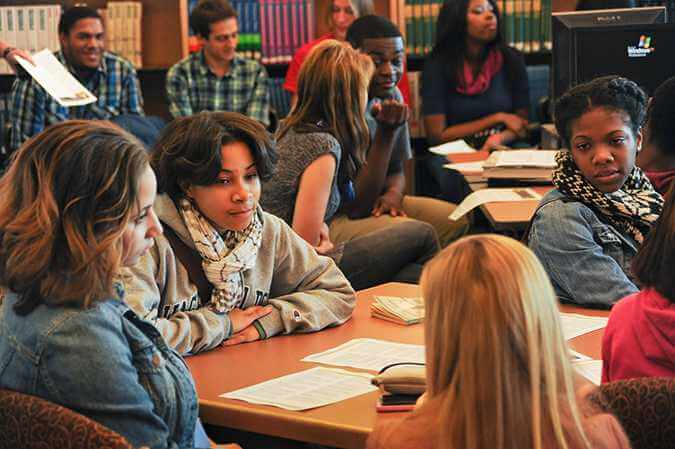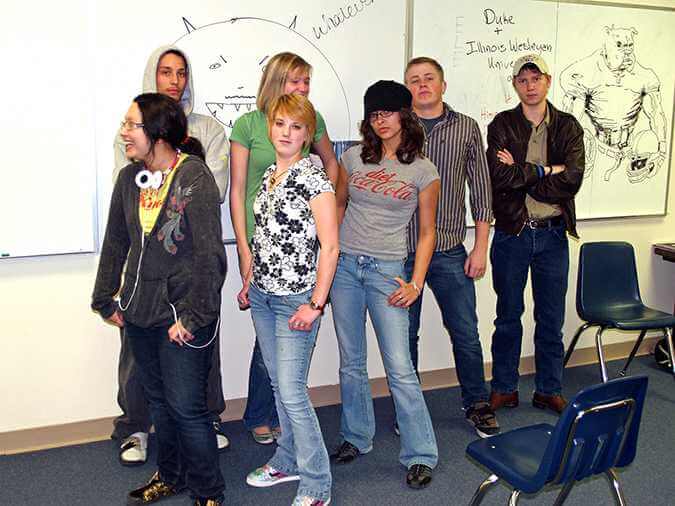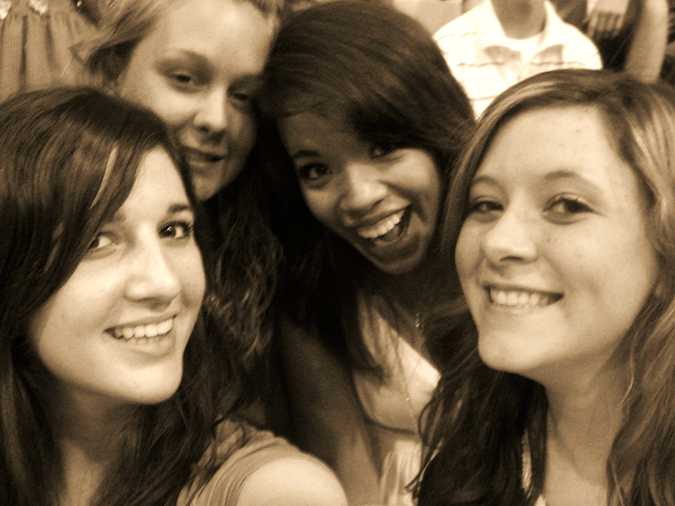The things I learned well have all been things I chose to learn. This is true for everyone I know, including the students I have had in my classroom for the past 25 years. Learning happens best when the learner decides what, how, and why to learn. Most people agree with this, and their own experiences often support it. All my study on the matter and my own practice as an educator confirms it.
For most young people, though, making these decisions is extremely difficult. Our conventional education system rarely challenges students to make them, and when it does, it “permits” self-determination only in the most limited conditions. Far too many young people are stuck in school systems that are firmly rooted in the idea that young people are incapable of deciding for themselves what, how, and why to learn.
On the other hand, there are a growing number of students who determine their own learning based on their interests and choices. They homeschool or unschool or belong to one of hundreds of other alternatives to school all around the world. A few of these attend Ingenuity Hub: Personalized Learning Collaborative, a learning center some parents, educators, entrepreneurs, and I opened in Central Massachusetts.

In all of these places, there is an understanding that students who recently left conventional, coercive schooling need time and space to start grappling with their newfound freedom.
Practicing any new skill is difficult, even intimidating, and being free to learn for the first time is no different. Every young person reacts differently to this freedom, and some take longer than others to understand what it really means for them. This period of time is often referred to as “deschooling.” Youth who find alternatives to school all go through this process in some way or other.
The act of leaving is the first step. Young people are then faced with the exciting, sometimes daunting realization that, “I don’t have to go to school anymore... now what am I going to do?”
This deschooling process almost always happens outside the context of conventional school. Some believe it can only happen that way, and work to create Self-Directed Education available to students outside the confines of the education system.
In addition to my work at Ingenuity Hub, I also work at a very conventional high school, and I realize that I, and my views about learning — have been profoundly changed by my understanding of Self-Directed Education. Because I have seen its benefits, I have tried to create access to this approach for students at the high school where I work. Students there have come to see themselves as powerful agents of their own learning, and have become dissatisfied with being obedient, passive learners. They want control of their education, so we are trying to deschool while in school.
This series of essays documents our efforts. In Part 1, “Is It Possible?” I explained my long journey to discover and understand Self-Directed Education, how that understanding grew into a passion for this approach, and then how that passion inspired me to create opportunities for young people in my community to become self-directed learners. My experience changed me in profound ways: I could no longer be a conventional teacher. I had to make available an option that acknowledges students’ right to decide what, how, and why to learn. I am committed to this goal despite the system’s inherent, often truculent resistance to this change.
The obstacles we face are significant, but in this essay, I want to step back from them, and rather share the joy I experience everyday working with young people who are beginning to understand their own power.
My instincts are to begin with examples of students who immediately believed me when I told them they could learn whatever they want to learn, and enthusiastically jumped right in without hesitation; the students who learned fluent Korean, or built computers, or incorporated their own businesses. I am going to start, rather, with students who did not believe or understand me, or had no idea how to make decisions about their own learning: the students who “do nothing.”
The joy I derive from facilitating Self-Directed Education comes as much from these students as from any others. In our community, we acknowledge that doing nothing is an available option for students everywhere and at any time, just like it is an option for adults. Students in conventional school frequently make this choice, and they do so surreptitiously or deceptively. They get very good at appearing to do what they are told, while learning little to nothing that is meaningful to them.

Getting away with this can be alternately stressful or exciting, depending on the student and the situation. Students worry that they may get caught, but sometimes enjoy this strategy, if they get away with it, as they often do. Putting one over on an authority figure is thrilling, especially for many adolescents. Many students experience a kind of superiority over adults if they can do no real work, make it look like they did, and get a passing grade for it. So teachers often try to create assignments or procedures that make this more difficult, alienating students from authentic learning even further, and increasing the thrill students experience by leaping those extra hurdles.
On the other hand, when we acknowledge “doing nothing” as an available option among all the choices learners can make, then when they make it, it’s not the end of the world. Instead, it’s a choice that we can examine and learn from.
This authentic approach is liberating for everyone, not just the student. I spend a lot of my time in honest discussions with young people about how they are choosing to use their own time. This is a joy. We don’t have to play any games. There is no one-upmanship involved, and I’m not trying to catch a kid lying or being lazy.
Something else pretty great happens, too. We realize rather quickly that doing nothing is rarely doing nothing, especially when it is an active choice students can acknowledge without fear of getting in trouble. When “doing nothing” becomes a valid choice, rather than an escape from onerous homework or classroom activities, students begin to see the process of learning differently.
They can say, “Let me take a break, or step back and take a look at what I’ve been working on, or consider a different direction. Maybe I can come back to this in a day or two with fresh eyes and see something new in it. Maybe I’m happy with where I’ve gotten with this particular skill or idea or story or program. Let me enjoy it for now, and worry about next steps later.”

When a young person says, “I think I’ll take a break,” without fear of getting in trouble, it is a sign she realizes she is in control of her time, and is free to decide how to use it. It is also often a sign that she is aware of her own needs, and values what her own body and mind are telling her.
In my practice, examples of this abound. It happens all the time. A student told me very recently she needs to take breaks frequently from the learning she has decided to do because it involves research and original artwork around depression and related events in her life that have been emotionally painful. “I just can’t spend all my time working on it. It’s just too draining to think about it and look at it all the time, so I stop when I feel I need to.”
I asked her what those breaks look like and how she gets back to her projects. “Depends. I’ll hang with friends, just play on my phone, chill. Sometimes my friend will say something – or even something that happens in a video game – will remind me about what I was working on, and I’ll go back to a drawing I was doing. Or I’ll just get bored with those things and want to do my stuff again.”
Having the freedom to examine how we use our own time leads us to understand how valuable that time is. It does not take long for most young people to decide what to do next. Once they understand they have the power to learn what and how they want, and for reasons of their own, nothing can stop them. They rediscover their innate curiosity and drive to learn, when they have the time.
This is why I went into the field of education, and why I love working with young people. I want them to be able to figure out for themselves how to exercise their inalienable right to pursue their own form of happiness. It seems clear to me that self-directed learning IS the pursuit of happiness.
And it’s why I keep trying to create Self-Directed Education opportunities where I work, despite the institutional resistance to it. I can not stop. It has become a part of me.
Read the whole series:
Deschooling in School
Part 1 | Part 2 | Part 3 | Part 4
If you enjoyed this article and feel called to give back to ASDE, here are ways you can support our work:
- Donate money
- Share our content with others! Click one of the buttons above to easily share on Twitter, Facebook, or email.
- Consider becoming a Contributor for Tipping Points
Tipping Points Magazine amplifies the diverse voices within the Self-Directed Education movement. The views expressed in our content belong solely to the author(s). The Alliance for Self-Directed Education disclaims responsibility for any interpretation or application of the information provided. Engage in dialogue by reaching out to the author(s) directly.






